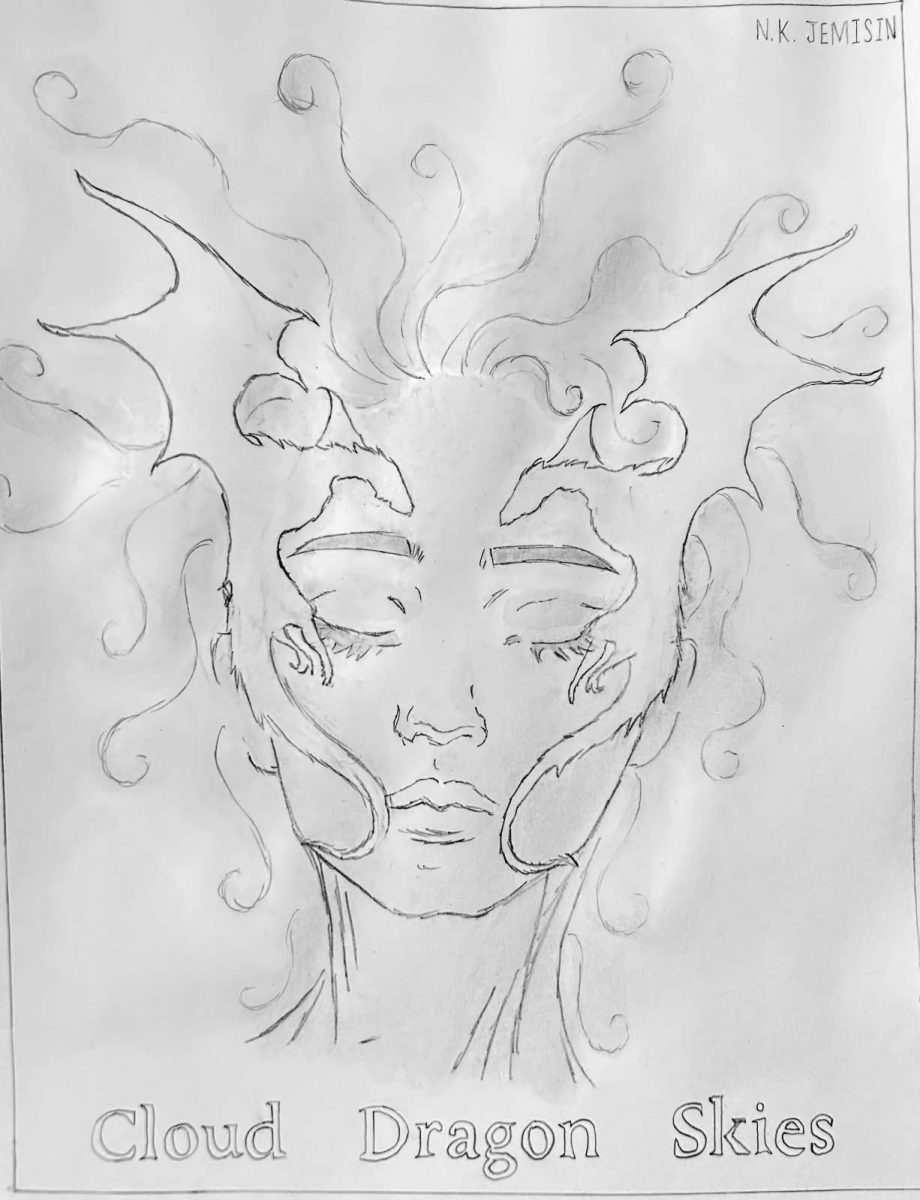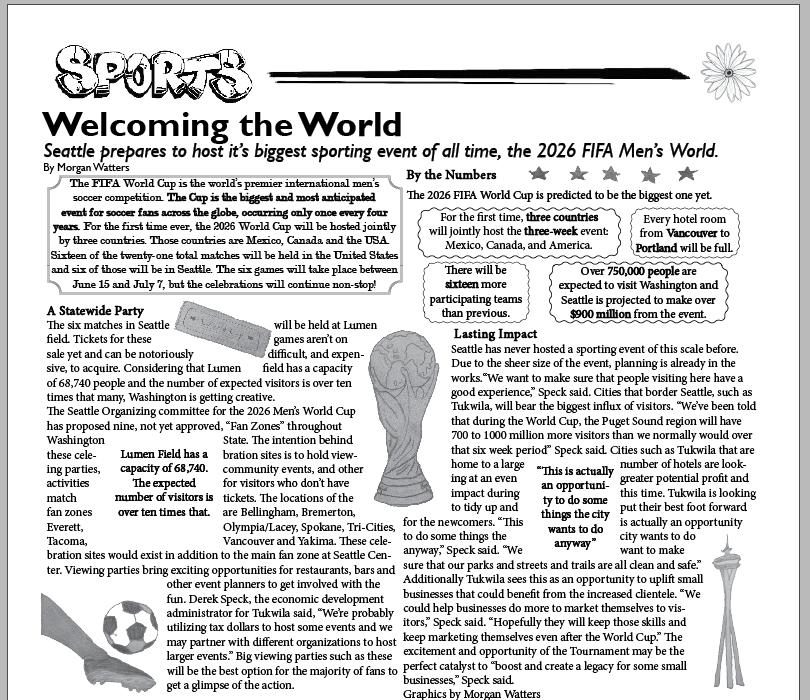In 2024, Garfield High School was the only high school in the Seattle Public Schools system to plan a week of action honoring the Black Lives Matter movement in its strive towards racial justice and the celebration of Black identity and culture. The week grounded realities and pressures facing the Garfield community.
During this year’s week of engagement, students were able to discuss and learn about various issues that affected the community such as gun violence and mental health. Many other discussions of community engagement and social justice such as minority-owned businesses, overcoming drug addiction, discussion over youth rights, and the history of the Central District also occurred. These events occurred simultaneously with a Black Lives Matter spirit week which featured numerous displays of both Black and African-American culture, entrepreneurship, dignity, and resilience.
Garfield has had celebrations organized for Black History Month in the past, but community summits and an associated spirit week is a relatively recent development. Students of color have long aired their grievances against the Garfield administration about the lack of care and visibility of their portion of the student body. BLM week was rebirthed as a greater effort to unify Garfield’s stratified identities and build racial solidarity.
The events of BLM week received a wide spectrum of feedback. Highlights included an opening rap opera by elementary schooler Zaina, performances by the athletic band, and a West African dance presentation. Another highlight of the week was the Divine 9 assembly organized by BSU in collaboration with Ms. Trahan. BSU’s Lou Williams gave insight into the motivation, objectives, and accomplishments of the assembly. “Because we did this assembly last year, I think that it was a lot easier this time around; we were able to build off of [last year’s],” Williams said. BSU’s involvement proved successful as a club that “[provides] a space for us to like, be social and have community.” Williams added.
Part of the assemblies’ mission is to showcase Black voices and talents, as well as educate the student body about the systemic racism that influences Garfield and the Central District. Williams detailed a conversation he had with Trahan about the high school’s history: “She said ‘Garfield is a Black school, that has a lot of white people in it, basically.’ Which I feel is a pretty on-point way to describe [it]. Garfield’s history has been a majority Black [school]–and just non-white school initially–and then with gentrification, and like, white people coming back into the Central District after it being historically redlined…That has shifted a lot over time, but I think that honestly, just for starters, people understanding the history of Garfield is quite important.”
Williams expressed his feelings that parts of that segregation live on in AP courses. “I, personally, am conflicted in some ways about [AP classes]… On the one hand [I] just think that AP classes are [kind of] unnecessary or just like, sort of inherently designed to fail people.” But the largest issue lies in the disproportionate number of Black students in AP courses to the population of the entire school. “I think that a lot of Garfield’s shortcomings in terms of equity have a lot to do with AP classes.” He stated that “they aren’t as good as they could be. Because when people… are absent from those spaces, the learning is just not as good as it would be if we were all there together… I think that part of a big reason that they fall short is because they’re, like, majority non-Black.”
A major complaint among Garfield’s student body was the perceived inaccessibility of the summits. This and last years included racial affinity summits which faced a flurry of accusations regarding them as segregationist and “weird”, particularly for non-Black students. Accusations that the affinity spaces were exclusionary or short-sighted were more common from students who identified as Arab, multiracial, and various other identities. They did not feel an affinity to any of the spaces offered and felt as if they had nowhere to go. The LGBTQ+ summit being canceled due to a miscommunication in date and time did not comfort the negative commentary.
Criticism went both ways about the lack of student voice and outreach. When asked, one of the presidents of Garfield’s Gay-Straight Alliance (GSA) said that they only received notice of the LGBTQ+ summit the day that it happened. A member of Garfield’s Asian-American student union concurred, recalling that they received no particular outreach about the Asian/Hispanic summit and said that the primary organizer of BLM week hadn’t reached out to them either. The latter elaborated they didn’t need to “necessarily put it on us” but could “at least ask.” She also explained that the guest speakers that the summits had weren’t a bad idea so long as the discussion remained quality. She however detailed that that wasn’t the case for the Asian/Hispanic summit; saying how it had “failed” due in part to the “wishy-washy” quality.
Many students who criticized or skipped the community engagement summits before Thursday’s affinity spaces felt the topics were irrelevant to their lives and therefore not worth the interest or attendance despite their prevalence among the multiple communities in and around Garfield.
Teenage apathy isn’t necessarily a critique of the summits themselves and is a conversation for another day, but it’s debatable if the lack of engagement from students is apathy or something different. Students who did not attend the summits and assemblies for BLM week were able to concisely answer the questions of what BLM meant in general, at school, and to them personally. Despite having skipped the summits, a senior described BLM as necessary “to draw attention to violent and racist treatment of Black people” and at school he described BLM as an important chance to draw attention to “inequalities in our school system and to examine the ways that the school community can be a force for change.” He was also able to recognize events like BLM week as an important chance to reflect on their “own position and privilege in our schools and country at large. A junior who skipped the affinity groups and Divine 9 assembly stated that BLM at school is important to recognize the importance of “equal opportunity and fair discipline” and that to them personally it meant “properly repairing the damage done as best as we can and giving proper reparations for Black people and moving forward while recognizing the wrongdoings of our country.” These answers are in touch with the framework of BLM and yet they still don’t feel the need to completely engage with programming. On the other hand, a junior who skipped the summits when asked said that they wanted to spend time with friends and jokingly asked “Does that make me racist?”
Though this week’s current form has only been around since last school year, Black History Month is not a secret. Solidarity and change can’t be expected without outreach and engagement. If you don’t plan, communicate with organizers, or scan the QR code to give feedback, then things will always be “boring” and a “waste of time.” What’s being done is new, so of course hiccups will occur. Speaking up was how BLM week started in the first place. If there’s a problem, say something.








